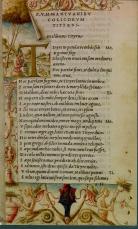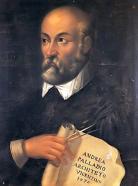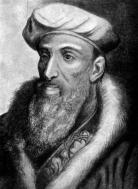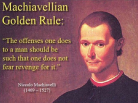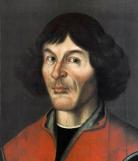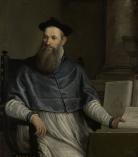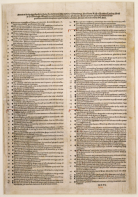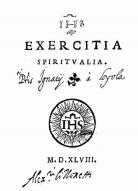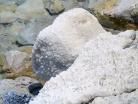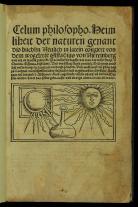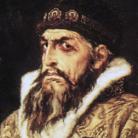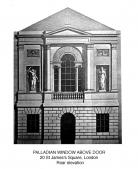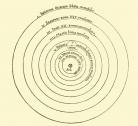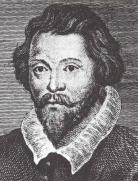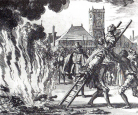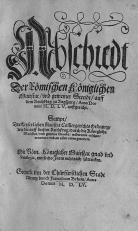Making the Human/ Inventing Venice
Created by Dino Franco Felluga on Fri, 12/30/2016 - 10:56
Part of Group:
This timeline allows students to see important events connected to the transition from Medieval to Renaissance Italy (focussed especially on Venice).
Timeline
Chronological table
| Date | Event | Created by | Associated Places | |
|---|---|---|---|---|
| circa. 1500 |
Glasses available to the general publicBefore the invention of the Gutenbergs' printing press, visual aids were used only by religious monks and scholars. After the widespread distribution of manuscripts and books among the general public, the demand for eyeglasses increased. By 1500, spectacle peddlers were a common sight. They carried baskets of single wire German made spectacles which people would rummage through in order to find the right pair. The image is from Wikimedia Commons and is free to use. |
Sahil Lala | ||
| circa. 1500 |
Fantasia Music:Fantasia was a music style that became more popular in the 16th century. It derives its name from the word fantasy, which signifies the absense of structure. Practically, this meant composing songs of varying length that were specifically created for an instrument. This style of composition gained more fame in the Baroque and Classical time periods, when purely instrumental music became more popular, with composition masters such as Mozart and Beethoven creating beautiful pieces of music. |
Justin Chan | ||
| 1501 |
Harmonice Musices OdhecatonThe Harmonice Musices Odhecaton (One Hundred Songs of Harmonic Music) was a collection of polyphonic Franco-Flemish songs published in 1501 by Venetian printer Ottaviano Petrucci. It was the first book of polyphonic music printed using movable type. Petrucci printed two parts on the right-hand page and two parts on the left-hand page, which allowed four singers or instrumentalists to read from the same sheet. The triple-impression technique was used during the printing process, in which the musical staff was printed first, followed by the text, and then the music notes. The Odhecaton was hugely influential in publishing and in the dissemination of Franco-Flemish musical style. Source: https://en.wikipedia.org/wiki/Harmonice_Musices_Odhecaton Image source: Wikimedia Commons (public domain) |
Kate Harris | ||
| 1501 |
Development of ItalicsItalics are first introduced in a volume of Virgil printed by the Aldine Press. The style was created by Francesco Griffo and was meant to mimic the handwritten style used in papal chanceries of this time period. Originally, the type face of ‘italics’ was only developed in lowercase letters and combined with the ‘regular’ uppercase Roman typeface. This edition of Virgil is also the first edition of a non-religious book to be printed in the “pocket,” or octavo, style that could be carried around in one’s pocket. Scholars could now carry and study Virgil and other classics at any time. This image is sourced from Wikimedia Commons and is public domain. |
Laura Titzer | ||
| The start of the month Sep 1504 |
Statue of David Unveiled to the PublicThe statue of Biblical hero David stands 17 feet tall. It is a masterpiece of Renaissance artist Michelangelo. He worked on it from 1501 to 1504. It was commissioned as one of many statues of prophets to be placed along the roofline of the east end of Florence Cathedral, but instead was placed in a public square outside the Palazzo della Signoria on its completion. To Florence, the statue stands as a symbol of their bold spirit and fight to preserve civil liberties. The statue was positioned so the eyes of David glared towards Rome in defiance. This file is licensed under the Creative Commons Attribution Share Alike 3.0 Uported License. |
Kai Strubel | ||
| 1505 to 20 Nov 1585 |
Life of Thomas Tallis:Born in 1505, Thomas Tallis was an important English composer and largely influenced English music by introducing polyphonic music. His early life is not documented well, and there is nothing known about his education. All that is known is that he appeared in various places in performance, including being a member of the Chapel Royal. He was the mentor of William Byrd, and together in 1577 they were granted the monopoly for printing music in England, a first at the time. One of his greatest works was Miserere nostri. It demonstrated a mastery over the art of counterpoint, and heavily used canon throughout it. Tallis died on November 20, 1585. Image Source: Britannica.com |
Justin Chan | ||
| circa. 1506 to circa. 1519 |
Da Vinci and the Human HeartAs an architect-engineer, Leonardo da Vinci was interested in the relationship between mechanics and human anatomy. He was particularly fascinated by the heart and the flow of blood. Da Vinci was the first to describe the heart as a muscle and a four-chambered organ. He also described the mechanics of blood flow through the chambers, with the atria contracting together and the ventricles relaxing together, and vice versa. Most impressive were his observations of the aortic valve. He utilized a self-constructed glass model of a bovine heart filled with grass seeds suspended in water. He observed vortices at the root of the aorta and correctly hypothesized that the vortices helped close the aortic valve. Because these drawings and notes were never published, this functioning of the valve remained unknown until 1968, when two Oxford engineers published a paper in Nature describing this mechanism, with their only reference being da Vinci’s illustrations and notes of the heart. Sources: http://ac.els-cdn.com/0003497591913712/1-s2.0-0003497591913712-main.pdf?_tid=1fd6a60c-f321-11e6-a0d5-00000aacb362&acdnat=1487123607_d89b02d75d9aff4411c0efe55fc1520a & http://www.bbc.com/culture/story/20130828-leonardo-da-vinci-the-anatomist Image source: https://leonardodavinci.stanford.edu/projects/anatomy/heart1.jpg and it is in public domain. |
Kate Harris | ||
| 1508 to 1512 |
Painting of Sistine ChapelAn addition to the Vatican complex, the Sistine Chapel was built for Pope Sixtus IV from 1477-1480. From 1508 to 1512, Michelangelo was commissioned by Pope Julius II to paint the ceiling of the Sistine Chapel. Michelangelo depicted several scenes from the Bible, including the iconic The Creation of Adam. This Renaissance artwork is an example of the growing complexity of art to include depth and even optical illusions as Michelangelo realized that the curved nature of the ceiling would add a unique dimension to his work. The method/materials Michelangelo used were fresco plaster and paint. The image on the timeline, which shows the overall plan of the ceiling, is licensed under Creative Commons and is Public Domain in the USA according to Wikipedia. |
Barbara McAnulty | ||
| 30 Nov 1508 to 19 Aug 1580 |
Life of Andrea PalladioAndrea Palladio was born in Padua but moved to Venice when he was still in his youth. Thirteen-year-old Andrea Palladio was an apprentice to a Venetian stonemason before being taken into a Classical education setting by mentor Gian Giorgio Trissino. Throughout his career, Palladio was responsible for many famous Italian structures, including the Teatro Olimpico theatre, Il Redentore church, and Villa Rotunda home. Palladio spread his genius by reproducing his work in several books in Italian, which made his expertise accessible to a large audience. His most famous publication was Quattro Libri. This image is from Wikipedia and is labeled Public Domain. |
Barbara McAnulty | ||
| 1510 to 1574 |
Life of Bartolomeo EustachiEustachi studied medicine in Rome and Padua. He spent most of his professional career in Rome where he taught anatomy, performed autopsies and dissections, and served as the physician to the Duke of Urbino and eventually the Cardinal Giulio Della Rovere. He was a supporter of Galenic anatomy, unlike his contemporary, Vesalius. He studied the anatomy of the internal ear and correctly described the tube that now bears his name (the Eustachian tube). By 1552, Eustachi had drawn and engraved 47 plates showing the human anatomy he had investigated; however, only 8 plates were printed with text during his lifetime. The unpublished plates were not discovered until the 18th century by Giovanni Maria Lancisi, who proceeded to publish the remaining plates with text in 1714 under the title Tabulae anatomicae Bartholomaei Eustachii. Had his entire collection of plates been published during his lifetime, it is probable that both Eustachi and Vesalius would be recognized as the cofounders of modern human anatomy, as opposed to only Vesalius. Sources: http://exhibits.hsl.virginia.edu/treasures/bartolomeo-eustachi-1520-1574/ & https://www.nlm.nih.gov/exhibition/historicalanatomies/eustachi_bio.html & https://en.wikipedia.org/wiki/Bartolomeo_Eustachi Image source: Wikimedia commons (public domain). |
Kate Harris | ||
| 1512 to 1597 |
The Life of Antonio da Ponte:Antonio da Ponte was an architect and engineer who worked in Venice. His most notable work was rebuilding the Rialto bridge out of stone. To earn this project, he defeated famous architects like Palladio and Sansovino in a design contest for the bridge. Other works of note are rebuilding the Doge's palace after part of it was damaged in a fire and assisting in building the New Prison. On some of his projects, including the Rialto bridge, he worked with his nephew, Antonio Contin, who would later take over building the New Prison after da Ponte's death. |
Teresa Ortyl | ||
| 1512 |
The Medici Family Returns from ExileNiccoló Machiavelli was a diplomat in Florence for 14 years while the Medici family was in exile, and attempted to organize a militia against their return. After being found out, he was tortured and jailed, giving him time to step outside the world of politics. Roman history and philosophy inspired authorship of The Prince, a book he wrote during his time outside of politics. This work incorporates values from both the old and new paradigms that were being defined during his era. From the old values, an idolization of cunning and deceitfulness as displayed in the Odyssey. From the new, the idea that destiny is something that can be controlled by decision making rather than falling to the power of fate. His ideas on establishing order and rule may be summed up in this quote from The Prince, "Since love and fear can hardly exist together, if we must choose between them, it is far safer to be feared than loved." |
Hannah Mylin | ||
| 1514 |
Commentariolus published by Copernicus1514 Commentariolus (Latin for "Small Commentary") was published by Copernicus. This 40-page manuscript set out seven axioms describing aspects of the heliocentric solar system. This included bold statements such as the earth is not the center of the earth, the distance from the sun and earth is only a fraction of the distance from earth to other stars, stars do not move they only appear to because of the earth’s motion. This file is licensed under the Creative Commons Attribution Share Alike 3.0 Uported License. |
Kai Strubel | ||
| 1514 to 1564 |
Life of Andreas VesaliusAndreas Vesalius was a Flemish physician who studied medicine in Paris, Louvain, and Padua. Though his professors followed the methods of the ancient physician Galen, Vesalius did not agree with this practice. Vesalius believed that the study of human anatomy should be based on visible proof gained from dissecting human bodies, not from Galen’s theories, which were based on the dissection of animals and the ideas of Hippocrates. In 1543, Vesalius published De humani corporis fabrica (On the Fabric of the Human Body), considered by many to be the world’s most influential book of anatomy. The information and image presented here were obtained from: http://www.vesaliusfabrica.com/en/vesalius/biography.html. The image is public domain. |
Kate Harris | ||
| 1514 to 1570 |
Daniele BarbaroBarbaro was an Italian diplomat, cardinal and translator. His main contribution came from translating Vitruvius' De Architectura. In order to translate both the words and drawings, he worked with Palladio. Through this, Palladio was able to practice his drawing and woodworking skills, honing his skills and familiarity with De Architectura. Beyond this, Barbaro served the Republic of Venice in positions such as at the Council of Trent. This information is from http://architectura.cesr.univ-tours.fr/Traite/Notice/Barbaro1556.asp?par... and “A new general biographical dictionary, Volume 3”, Hugh James Rose, Henry John Rose, 1857, pg. 137. The image is from Wikimedia Commons and is from the public domain. |
Tim Brunner | ||
| 1516 |
La segregazione degli ebreiLa segregazione degli ebrei – the world’s first Jewish ghetto – was established on March 29, 1516. Before the establishment of the ghetto, Jews in Venice had only been allowed to live on the mainland, not the Dominant (main city of Venice). It was in 1516, after a war between Venice and French and imperial sources, that the Jews fled the mainland and sought refuge in Venice. However, they still feared persecution in Venice and asked that they be “isolated” for their own protection. Ultimately, the establishment of the ghetto segregated the Jewish community from the rest of Venice but also allowed the Jewish culture to flourish. This image is sourced from the Jewish Museum of Venice. |
Laura Titzer | ||
| 1517 |
Eyeglasses with Concave LensesAll the eyeglasses up till the 16th century were made using convex lenses which were unable to cure near sightedness. This painting by Raphael shows Pope Leo X, one of the first few people to start using concave glasses. Pope Leo X was very near-sighted and used these glasses for hunting. "With them I see better than my companions," are his words. This picture hangs in the Pitti Palace in Florence, where the concave lenses can be seen in his hands. The image is from Wikimedia Commons and is available for public use. |
Sahil Lala | ||
| 31 Oct 1517 |
Luther's Ninety-Five ThesesAn example of ideas spreading due to the print revolution, the Ninety-Five Theses written by Martin Luther transformed Christianity. Luther, a German monk, vocalized in the theses what he believed was unhealthy about the Catholic Church, including the selling of indulgences and the impersonal, robotic process of sacraments that religion had become. This document sparked the first protestant branch of Christianity. This document adds to the complexity of the Renaissance relationship to Christianity as many aspects of life were becoming more secular. The image is from Wikipedia and is labeled Public Domain. |
Barbara McAnulty | ||
| circa. 1520 |
Madrigal Vocal Music:A form of vocal chamber music that originated in Italy in the 14th century, but didn't flourish until the Renaissance Period. Often in the beginning of its development, a composer and poet would work together in order to create a composition. It is often set polyphonically in multiple voice parts and originally designed for one voice to sing each part. However, often multiple people would double up on parts to acheive greater sound. These songs were often sung at courtly social gatherings, including meetings of academics. These pieces of music greatly relied on harmoic progressions, something that was very new for the time period. |
Justin Chan | ||
| 1520 to 1579 |
Life of Giovanni Antonio RusconiGiovanni Antonio Rusconi was an architect, engineer translator, and illustrator in Venice. To prepare himself for his career, he studied math at the University of Padova. He spent most of his career as a hydraulic engineer for the Republic of Venice. After noticing errors in Renaissance editions of Vitruvius's works, he set out to translate and provide illustrations for an edition of his own called Della Architettura. However, his translation was not published until 1590, 11 years after his death. His major architectural feats include assisting in the construction of the Palazzo Grimani and the New Prison. The picture is in the public domain, provided by the British Library from its digital collections, and is free for use. |
Teresa Ortyl | ||
| 1520 to 1523 |
First Printed TalmudDaniel Bomberg, a Belgium that relocated to Venice, was the first to print Hebrew texts in Venice and was also the first in the world to print copies of the Rabbinical Bible and the Talmud, the book of Jewish civil and ceremonial law. As Jews in Venice were not allowed to print or own printing presses by themselves, Bomberg employed several members of the Jewish community to assist him in editing these religious texts. The first editions of the Talmud and Rabbinical Bible, although they are the religious works of Judaism, were printed for everyone to read. Scholars and people of all religions could have access to and study these religious texts that were “fundamental to the development [of] Western culture ("Bound" 2017).” This image is sourced from Wikimedia Commons and is public domain. "Bound in Venice. The First Talmud." PrintedMatter. N.p., n.d. Web. 25 Feb. 2017. <http://primolevicenter.org/printed-matter/bound-in-venice-the-first-talm.... "The Talmud: Early Editions." Early Editions - Judaic Treasures. N.p., n.d. Web. 25 Feb. 2017. <http://www.jewishvirtuallibrary.org/early-editions-judaic-treasures>. |
Laura Titzer | ||
| 1521 |
First Modern-Language Translation of Vitruvius's De Architectura Published:Cesare Cesariano first published an Italian translation of Vitruvius's De Architecture at Como. It was a massive improvement for the work, as it had been inaccessable to many due to its lack of illustrations and difficult-to-read Latin. The translation remedied both, putting it into language readable to the majority of literate individuals in the area and providing a plethora of illustrations that could be referenced. However, it was plagiarized numerous times and eventually forgotten after the 1556 release of Barbaro's translation with Palladio's illustrations. The image is by Cesare Cesariano [Public domain], via Wikimedia Commons. As it is in the public domain since the copyright term has passed, it is free to use. |
Teresa Ortyl | ||
| 1522 to 1524 |
The Spiritual Exercises of Ignatius of Loyola were ComposedAs efforts at spiritual reformation surfaced in light of the corruption that had taken hold in the Church throughout Europe, Saint Ignatius of Loyola founded the Society of Jesus, a religious order aimed at obedience and loyalty to the Pope. A Spanish priest and theologian, Ignatius aligned himself with the pro-Catholic counter-reformation movement; however, he did not support the corruptive practices of the Papal clergy. Motivated by a desire to restore the Catholic faith, he composed the Spiritual Exercises of Ignatius of Loyola, a set of prayers, meditations, and practices designed to help Christians (primarily Catholics) understand the nature of their relationship to God. Split into four thematic week-long sections, this piece of literature is evidence of the religious shift from a focus on the divinity of God to a focus on the significance of the individual in relation to God. (Image Source: St. Ignatius of Loyola (1st. ed.) [Public Domain], via Wikimedia Commons, https://commons.wikimedia.org/w/index.php?curid=3228172) |
Andrew Natoli | ||
| 1524 to 1648 |
Wars of ReligionThe Wars of Religion in Europe began after the commencement of the Protestant Reformation in Western and Northern Europe. These Wars of religion were a streak of wars in Europe from 1524-1648. The Wars of Religion were fueled by the religious changes of the period and the rivalries that arose from said changes. Additionally, against common belief, not all of these wars were connected. |
Mara Kossoff | ||
| 1525 |
Paracelsus Uses Diethyl Ether as an AnalgesicWhile experimenting with various chemicals for medicine, Paracelsus discovered the analgesic properties of diethyl ether. He found these pain-killing properties while performing tests on chickens. This discovery added to the short list of effective drugs of the Renaissance, which included opium and quinine. Image Source: Public Domain, https://upload.wikimedia.org/wikipedia/commons/4/4a/Paracelsus.jpg |
Ryan Gansemer | ||
| 1526 |
Paracelsus Uses the Name "Zink"Paracelsus named the element zink after its sharp, pointed crystals, which stemmed from the German word "zinke" meaning pointed. He described the new element as tin-like. This element was commonly used in alchemy when the alchemists would burn zinc and collect the product zinc oxide. This discovery laid the foundation for the beginning of the concept of modern chemical elements. Image Source: Public Domain, https://upload.wikimedia.org/wikipedia/commons/f/f9/Zinc_fragment_sublim... |
Ryan Gansemer | ||
| 6 May 1527 |
Sack of RomeWaged by the army of the Holy Roman Emperor, the conquest of Rome on May 6, 1527 came after a long-term power struggle between the Roman Empire under Charles III and the Papacy under Pope Clement VII, who had allied himself with several Western European powers. Comprised of Spanish and German mercenaries, the Imperial army attacked the much smaller militia force of the Papal states, besieging the poorly defended Roman city in just over a day. Though the Imperial army suffered the loss of Emperor Charles III, who died in the initial assault, they succeeded in reaffirming dominion over the Papacy in Rome. As a display of their power over Papal affairs, the victorious Imperial troops continued to ransack the city for months, desecrating churches and monasteries, and torturing Roman citizens. Ultimately, though the sack of Rome itself was brief, the belief that the moral failures of the Church were to blame for Rome’s fall—the belief that there was a need for Papal reformation—pervaded much of Western Europe for many years to come. (Image Source: Johannes Lingelbach [Public Domain], via Wikimedia Commons, https://commons.wikimedia.org/w/index.php?curid=6632076) |
Andrew Natoli | ||
| 1530 |
Paracelsus Adds Salt to Create a Trinity of Alchemical ElementsParacelsus added salt to sulphur and mercury to make three elements of alchemy, creating an elemental trinity. In medicine, Paracelsus believed in the importance of the trinity as sulphur represented a combustible element, mercury represented a fluid, changeable element, and salt represeneted a solid, permanent element. He believed that these three elements accurately represented alchemical medicine. Sulphur represented the soul, salt represented the body, and mercury represented the spirit. Image Source: Public Domain, https://upload.wikimedia.org/wikipedia/commons/f/fd/DeadSeaIsrael5.jpg |
Ryan Gansemer | ||
| 1530 |
Paracelsus Develops the Study of IatrochemistryIatrochemistry has roots in alchemy, but served as a transition between alchemy and modern medicine as it was popular between approximately 1500 and 1700. Paracelsus was a firm believer in the connection between physical health and the balance of bodily fluids, which led to the development of iatrochemistry. This branch of both chemistry and medicine intended to provide medical solutions in the Renaissance. Image Source: Public Domain, https://upload.wikimedia.org/wikipedia/commons/4/4c/Celum_philosophorum_... |
Ryan Gansemer | ||
| circa. 1530 to circa. 1538 |
Villa Trissino in CricoliPalladio was first discovered by Trissino while working as a stonemason rebuilding Villa Trissino around 1530. Trissino would then have Palladio study at his academy, which was this very same building. While learning here, Palladio had the opportunity to meet with a variety of people, like the aristocracy of surrounding regions, who would go onto employ him later in life. This information was taken from https://www.britannica.com/biography/Andrea-Palladio#ref33636. The image is from Wikimedia commons, from By Hans A. Rosbach - Own work, CC BY-SA 2.5, https://commons.wikimedia.org/w/index.php?curid=2530227 |
Tim Brunner | ||
| 1533 to 1547 |
Who Ivan the Terrible Actually WasIvan the Terrible, actually born Ivan IV Vasilyevich, was the Grand Prince of Moscow from 1533 until his death. Historical records note that Ivan was extremely intelligent, but had mental illnesses and a very short temper. Ivan was able to change the state from a medieval state to an empire and emerging regional power, and then to be crowned the first Tsar of Russia. Additionally, Ivan was a patron of arts and trade and even founded Russia's first publishing house, Moscow Print Yard. Ivan got his nickname because of his bloodthirsty habits and cruel personality. |
Mara Kossoff | ||
| 1537 |
Palladian WindowThe Palladian window consists of three individual windows: a large, arched window in the middle accompanied by two narrower windows on each side. This style of window was popularized by Andrea Palladio, but the style can be traced back to Sebastiano Serlio in his book L’architettura, written in 1537. Sometimes this style of window is referred to as the Venetian window or Serlian motif. This window was used in European and American architecture after the Renaissance. This information is from Britannica and Lindsay Daniel Architecture. The image is from Wikimedia Commons and is Public Domain. |
Nathaniel Gollmer | ||
| 1540 to 1600 |
Venetian polychoral styleThe Venetian polychoral style was a type of music of the late Renaissance and early Baroque eras. It involved spatially separate choirs (cori spezzati) singing in alteration. The style arose from the observed sound delay caused by the distance between the opposing choir lofts in Basilica San Marco, making it difficult for the cori spezzati to sing simultaneously. Composer Adrian Willaert, maestro di cappella of San Marco 1527-1562, solved this problem by writing antiphonal music, where the cori spezzati would sing successive, often contrasting musical lines. The development of this style represented a major stylistic shift from the polyphonic writing of the middle Renaissance to the Baroque era. Source: https://en.wikipedia.org/wiki/Venetian_polychoral_style Image source: http://i44.tinypic.com/2lkdypt.jpg (public domain) |
Kate Harris | ||
| 1541 |
the Last Judgement by MichelangeloLocated on the wall of the Sistine Chapel in the Vatican, the Last Judgement is a fresco by Italian Renaissance master Michelangelo. The painting shows God’s final judgement of all humanity. The painting depicts God in the middle of a mass of humans, pulling some up to heaven and damning others to hell. God is surrounded by depictions of many famous saints. The work is considered revolutionary because Michelangelo did not depict the figures by their social position, but rather showed everyone in equal standing, bare before God. The piece received mixed reception. Some believed that nude figures should not be shown in such a sacred place. The work took Michelangelo four years to complete. He was commissioned by Pope Clement VII to paint the resurrection, but when the pope died, Pope Paul III believed the Last Judgement was a more fitting subject. This file is licensed under the Creative Commons Attribution Share Alike 3.0 Unported License. |
Kai Strubel | ||
| 1542 |
Villa GodiThis villa, in Lugo di Vicenza, is the first villa created by Palladio. It goes on to be mentioned in his work "The Four Books of Architecture." This reflects Palladio's first attempt at architecture. This villa has elements of a castle, like a small tower, and of roman architecture. This information was taken from http://www.villagodi.com/english/history.html. The image is from wikimedia commons, By Stefan Bauer, http://www.ferras.at - Own work, CC BY-SA 2.5, https://commons.wikimedia.org/w/index.php?curid=2485535 |
Tim Brunner | ||
| 1542 |
Villa Pisani BonettiThis villa in Bagnolo was built in 1542 by Palladio. This building is significant in Palladio's career because it reflects a turning point in several aspects. Fresh off a trip to Rome a year previous, Palladio architecture begins to reflect his idea of a residence. Yet, this design is far from the Villa that Palladio would go on to describe in The Four Books of Architecture. This building is significant in offering a reference point in the evolution of Palladio. Beyond architecture, this building demonstrates that Palladio is also beginning to attract a wealthy crowd for his services. This information is taken from http://www.visitpalladio.com/en/node/1473/villa-pisani-bonetti.html. The image is taken from Wikimedia Commons, By Hans A. Rosbach - Own work, CC BY-SA 3.0, https://commons.wikimedia.org/w/index.php?curid=2411279. |
Tim Brunner | ||
| 1543 |
De humani corporis fabricaThis book was revolutionary, illustrating with incredible detail the anatomy of the human body. For the first time, accurate depictions of anatomical structures were integrated with descriptive text for the benefit of medical students and practitioners. These depictions were highly informative, as opposed to mere aesthetic visuals of previous writings. The illustrations were also drawn with a degree of naturalism that was previously unknown, perhaps in congruence with or influencing the way ideas about art were shifting from Byzantine to the more realistic pieces typical of perspectival art. |
Hannah Mylin | ||
| 1543 |
Copernicus's De revolutionibus orbium coelestium is published1. 1543 De revolutionibus orbium coelestium was published. Copernicus lays out the Copernican heliocentrism, an astronomical model that puts the sun at the center of the universe. Copernicus describes the sun as sitting motionless at the center as the earth and other planets rotate around it in circular paths. Copernicus dedicated the book to Pope Paul III, hoping to gain favor from the church. This file is licensed under the Creative Commons Attribution Share Alike 3.0 Uported License. |
Kai Strubel | ||
| 1543 to 4 Jul 1623 |
Life of William Byrd:Born in 1543 in London, England, Byrd was a gifted pupil of Thomas Tallis, and showed great talent playing the organ. Together, these two were tasked by Elizabeth I with importing, printing, publishing, and selling music. They put these together in a collection called Cantioned sacrae, in which Tallis contributed 16 and Byrd 18. Byrd continued to write compositions, both church-related and secular. One of his greatest collections was named Gradualia in which he attempted to comprise music for both the daily routine of mass and the special occasions. One note about this is that he often composed church music in both English and Latin, which was abnormal for the time. In addition, Byrd played a huge role in pioneering the development of fantasia, another form of music composition that would explode in popularity in the 17th and 18th centuries. He died on July 4, 1623. Image Source: Wikipedia |
Justin Chan | ||
| 1543 |
De humani corporis fabrica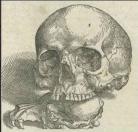 A human skull lies atop a dog skull, representing Galen's misuse of animals to describe human anatomy. This illustration can be seen in Vesalius' manual. |
Kate Harris | ||
| 1545 to 1563 |
Council of TrentOrganized in an attempt to promote unity and reform in the Christian community following the excommunication of Martin Luther, the Council of Trent was one of the most influential councils in the history of the Roman Catholic Church. Spanning the reign of three Popes from 1545 to 1563, the council issued a number of decrees in which it established dogma that would serve as the foundation of modern-day Catholicism. In these decrees, the council asserted the Catholic belief in transubstantiation, defined Mass as a sacrifice in remembrance of Christ, condemned Protestant beliefs that it defined as heresy, and ruled against Martin Luther’s belief in justification “by faith alone.” Confirmed by Pope Pius IV in 1564, these decrees—and many others—marked a major victory in the Counter-Reformation movement, and restored the faith of many in the authority of the Catholic Church. (Image Source: Unknown [Public Domain], via Wikimedia Commons, https://commons.wikimedia.org/w/index.php?curid=1148806) |
Andrew Natoli | ||
| 1547 |
Tre Savi sopra Eresia96 Normal 0 false false false EN-US X-NONE X-NONE DefSemiHidden="false" DefQFormat="false" DefPriority="99" LatentStyleCount="380"> UnhideWhenUsed="true" QFormat="true" Name="heading 2"/> UnhideWhenUsed="true" QFormat="true" Name="heading 3"/> UnhideWhenUsed="true" QFormat="true" Name="heading 4"/> UnhideWhenUsed="true" QFormat="true" Name="heading 5"/> UnhideWhenUsed="true" QFormat="true" Name="heading 6"/> UnhideWhenUsed="true" QFormat="true" Name="heading 7"/> UnhideWhenUsed="true" QFormat="true" Name="heading 8"/> UnhideWhenUsed="true" QFormat="true" Name="heading 9"/> Name="index 1"/> Name="index 2"/> Name="index 3"/> Name="index 4"/> Name="index 5"/> Name="index 6"/> Name="index 7"/> Name="index 8"/> Name="index 9"/> UnhideWhenUsed="true" Name="toc 1"/> UnhideWhenUsed="true" Name="toc 2"/> UnhideWhenUsed="true" Name="toc 3"/> UnhideWhenUsed="true" Name="toc 4"/> UnhideWhenUsed="true" Name="toc 5"/> UnhideWhenUsed="true" Name="toc 6"/> UnhideWhenUsed="true" Name="toc 7"/> UnhideWhenUsed="true" Name="toc 8"/> UnhideWhenUsed="true" Name="toc 9"/> Name="Normal Indent"/> Name="footnote text"/> Name="annotation text"/> Name="header"/> Name="footer"/> Name="index heading"/> UnhideWhenUsed="true" QFormat="true" Name="caption"/> Name="table of figures"/> Name="envelope address"/> Name="envelope return"/> Name="footnote reference"/> Name="annotation reference"/> Name="line number"/> Name="page number"/> Name="endnote reference"/> Name="endnote text"/> Name="table of authorities"/> Name="macro"/> Name="toa heading"/> Name="List"/> Name="List Bullet"/> Name="List Number"/> Name="List 2"/> Name="List 3"/> Name="List 4"/> Name="List 5"/> Name="List Bullet 2"/> Name="List Bullet 3"/> Name="List Bullet 4"/> Name="List Bullet 5"/> Name="List Number 2"/> Name="List Number 3"/> Name="List Number 4"/> Name="List Number 5"/> Name="Closing"/> Name="Signature"/> UnhideWhenUsed="true" Name="Default Paragraph Font"/> Name="Body Text"/> Name="Body Text Indent"/> Name="List Continue"/> Name="List Continue 2"/> Name="List Continue 3"/> Name="List Continue 4"/> Name="List Continue 5"/> Name="Message Header"/> Name="Salutation"/> Name="Date"/> Name="Body Text First Indent"/> Name="Body Text First Indent 2"/> Name="Note Heading"/> Name="Body Text 2"/> Name="Body Text 3"/> Name="Body Text Indent 2"/> Name="Body Text Indent 3"/> Name="Block Text"/> Name="Hyperlink"/> Name="FollowedHyperlink"/> Name="Document Map"/> Name="Plain Text"/> Name="E-mail Signature"/> Name="HTML Top of Form"/> Name="HTML Bottom of Form"/> Name="Normal (Web)"/> Name="HTML Acronym"/> Name="HTML Address"/> Name="HTML Cite"/> Name="HTML Code"/> Name="HTML Definition"/> Name="HTML Keyboard"/> Name="HTML Preformatted"/> Name="HTML Sample"/> Name="HTML Typewriter"/> Name="HTML Variable"/> Name="Normal Table"/> Name="annotation subject"/> Name="No List"/> Name="Outline List 1"/> Name="Outline List 2"/> Name="Outline List 3"/> Name="Table Simple 1"/> Name="Table Simple 2"/> Name="Table Simple 3"/> Name="Table Classic 1"/> Name="Table Classic 2"/> Name="Table Classic 3"/> Name="Table Classic 4"/> Name="Table Colorful 1"/> Name="Table Colorful 2"/> Name="Table Colorful 3"/> Name="Table Columns 1"/> Name="Table Columns 2"/> Name="Table Columns 3"/> Name="Table Columns 4"/> Name="Table Columns 5"/> Name="Table Grid 1"/> Name="Table Grid 2"/> Name="Table Grid 3"/> Name="Table Grid 4"/> Name="Table Grid 5"/> Name="Table Grid 6"/> Name="Table Grid 7"/> Name="Table Grid 8"/> Name="Table List 1"/> Name="Table List 2"/> Name="Table List 3"/> Name="Table List 4"/> Name="Table List 5"/> Name="Table List 6"/> Name="Table List 7"/> Name="Table List 8"/> Name="Table 3D effects 1"/> Name="Table 3D effects 2"/> Name="Table 3D effects 3"/> Name="Table Contemporary"/> Name="Table Elegant"/> Name="Table Professional"/> Name="Table Subtle 1"/> Name="Table Subtle 2"/> Name="Table Web 1"/> Name="Table Web 2"/> Name="Table Web 3"/> Name="Balloon Text"/> Name="Table Theme"/> Name="Note Level 1"/> Name="Note Level 2"/> Name="Note Level 3"/> Name="Note Level 4"/> Name="Note Level 5"/> Name="Note Level 6"/> Name="Note Level 7"/> Name="Note Level 8"/> Name="Note Level 9"/> Name="List Paragraph"/> Name="Intense Quote"/> Name="Subtle Emphasis"/> Name="Intense Emphasis"/> Name="Subtle Reference"/> Name="Intense Reference"/> UnhideWhenUsed="true" Name="Bibliography"/> UnhideWhenUsed="true" QFormat="true" Name="TOC Heading"/> Name="Grid Table 1 Light Accent 1"/> Name="Grid Table 6 Colorful Accent 1"/> Name="Grid Table 7 Colorful Accent 1"/> Name="Grid Table 1 Light Accent 2"/> Name="Grid Table 6 Colorful Accent 2"/> Name="Grid Table 7 Colorful Accent 2"/> Name="Grid Table 1 Light Accent 3"/> Name="Grid Table 6 Colorful Accent 3"/> Name="Grid Table 7 Colorful Accent 3"/> Name="Grid Table 1 Light Accent 4"/> Name="Grid Table 6 Colorful Accent 4"/> Name="Grid Table 7 Colorful Accent 4"/> Name="Grid Table 1 Light Accent 5"/> Name="Grid Table 6 Colorful Accent 5"/> Name="Grid Table 7 Colorful Accent 5"/> Name="Grid Table 1 Light Accent 6"/> Name="Grid Table 6 Colorful Accent 6"/> Name="Grid Table 7 Colorful Accent 6"/> Name="List Table 1 Light Accent 1"/> Name="List Table 6 Colorful Accent 1"/> Name="List Table 7 Colorful Accent 1"/> Name="List Table 1 Light Accent 2"/> Name="List Table 6 Colorful Accent 2"/> Name="List Table 7 Colorful Accent 2"/> Name="List Table 1 Light Accent 3"/> Name="List Table 6 Colorful Accent 3"/> Name="List Table 7 Colorful Accent 3"/> Name="List Table 1 Light Accent 4"/> Name="List Table 6 Colorful Accent 4"/> Name="List Table 7 Colorful Accent 4"/> Name="List Table 1 Light Accent 5"/> Name="List Table 6 Colorful Accent 5"/> Name="List Table 7 Colorful Accent 5"/> Name="List Table 1 Light Accent 6"/> Name="List Table 6 Colorful Accent 6"/> Name="List Table 7 Colorful Accent 6"/> /* Style Definitions */ table.MsoNormalTable {mso-style-name:"Table Normal"; mso-tstyle-rowband-size:0; mso-tstyle-colband-size:0; mso-style-noshow:yes; mso-style-priority:99; mso-style-parent:""; mso-padding-alt:0in 5.4pt 0in 5.4pt; mso-para-margin:0in; mso-para-margin-bottom:.0001pt; mso-pagination:widow-orphan; font-size:12.0pt; font-family:Calibri; mso-ascii-font-family:Calibri; mso-ascii-theme-font:minor-latin; mso-hansi-font-family:Calibri; mso-hansi-theme-font:minor-latin;} In 1547 Venice established a new magistracy, their express purpose to “assist the Venetian Inquisition in every aspect of its activity.” (Grendler 50) This culminated primarily in hunting down any heretical teachers, men who were sympathetic toward the Protestant movement or known for spreading works that deviated from the Roman Catholic Church. Church reformation was an attempt to squelch the ideas of science and enlightenment of man that were emerging in the philosophical community. Control of print meant control of the populace. This caused many of the printing shops to either go underground or move from Italy in order to survive. 96 Normal 0 false false false EN-US X-NONE X-NONE DefSemiHidden="false" DefQFormat="false" DefPriority="99" LatentStyleCount="380"> UnhideWhenUsed="true" QFormat="true" Name="heading 2"/> UnhideWhenUsed="true" QFormat="true" Name="heading 3"/> UnhideWhenUsed="true" QFormat="true" Name="heading 4"/> UnhideWhenUsed="true" QFormat="true" Name="heading 5"/> UnhideWhenUsed="true" QFormat="true" Name="heading 6"/> UnhideWhenUsed="true" QFormat="true" Name="heading 7"/> UnhideWhenUsed="true" QFormat="true" Name="heading 8"/> UnhideWhenUsed="true" QFormat="true" Name="heading 9"/> Name="index 1"/> Name="index 2"/> Name="index 3"/> Name="index 4"/> Name="index 5"/> Name="index 6"/> Name="index 7"/> Name="index 8"/> Name="index 9"/> UnhideWhenUsed="true" Name="toc 1"/> UnhideWhenUsed="true" Name="toc 2"/> UnhideWhenUsed="true" Name="toc 3"/> UnhideWhenUsed="true" Name="toc 4"/> UnhideWhenUsed="true" Name="toc 5"/> UnhideWhenUsed="true" Name="toc 6"/> UnhideWhenUsed="true" Name="toc 7"/> UnhideWhenUsed="true" Name="toc 8"/> UnhideWhenUsed="true" Name="toc 9"/> Name="Normal Indent"/> Name="footnote text"/> Name="annotation text"/> Name="header"/> Name="footer"/> Name="index heading"/> UnhideWhenUsed="true" QFormat="true" Name="caption"/> Name="table of figures"/> Name="envelope address"/> Name="envelope return"/> Name="footnote reference"/> Name="annotation reference"/> Name="line number"/> Name="page number"/> Name="endnote reference"/> Name="endnote text"/> Name="table of authorities"/> Name="macro"/> Name="toa heading"/> Name="List"/> Name="List Bullet"/> Name="List Number"/> Name="List 2"/> Name="List 3"/> Name="List 4"/> Name="List 5"/> Name="List Bullet 2"/> Name="List Bullet 3"/> Name="List Bullet 4"/> Name="List Bullet 5"/> Name="List Number 2"/> Name="List Number 3"/> Name="List Number 4"/> Name="List Number 5"/> Name="Closing"/> Name="Signature"/> UnhideWhenUsed="true" Name="Default Paragraph Font"/> Name="Body Text"/> Name="Body Text Indent"/> Name="List Continue"/> Name="List Continue 2"/> Name="List Continue 3"/> Name="List Continue 4"/> Name="List Continue 5"/> Name="Message Header"/> Name="Salutation"/> Name="Date"/> Name="Body Text First Indent"/> Name="Body Text First Indent 2"/> Name="Note Heading"/> Name="Body Text 2"/> Name="Body Text 3"/> Name="Body Text Indent 2"/> Name="Body Text Indent 3"/> Name="Block Text"/> Name="Hyperlink"/> Name="FollowedHyperlink"/> Name="Document Map"/> Name="Plain Text"/> Name="E-mail Signature"/> Name="HTML Top of Form"/> Name="HTML Bottom of Form"/> Name="Normal (Web)"/> Name="HTML Acronym"/> Name="HTML Address"/> Name="HTML Cite"/> Name="HTML Code"/> Name="HTML Definition"/> Name="HTML Keyboard"/> Name="HTML Preformatted"/> Name="HTML Sample"/> Name="HTML Typewriter"/> Name="HTML Variable"/> Name="Normal Table"/> Name="annotation subject"/> Name="No List"/> Name="Outline List 1"/> Name="Outline List 2"/> Name="Outline List 3"/> Name="Table Simple 1"/> Name="Table Simple 2"/> Name="Table Simple 3"/> Name="Table Classic 1"/> Name="Table Classic 2"/> Name="Table Classic 3"/> Name="Table Classic 4"/> Name="Table Colorful 1"/> Name="Table Colorful 2"/> Name="Table Colorful 3"/> Name="Table Columns 1"/> Name="Table Columns 2"/> Name="Table Columns 3"/> Name="Table Columns 4"/> Name="Table Columns 5"/> Name="Table Grid 1"/> Name="Table Grid 2"/> Name="Table Grid 3"/> Name="Table Grid 4"/> Name="Table Grid 5"/> Name="Table Grid 6"/> Name="Table Grid 7"/> Name="Table Grid 8"/> Name="Table List 1"/> Name="Table List 2"/> Name="Table List 3"/> Name="Table List 4"/> Name="Table List 5"/> Name="Table List 6"/> Name="Table List 7"/> Name="Table List 8"/> Name="Table 3D effects 1"/> Name="Table 3D effects 2"/> Name="Table 3D effects 3"/> Name="Table Contemporary"/> Name="Table Elegant"/> Name="Table Professional"/> Name="Table Subtle 1"/> Name="Table Subtle 2"/> Name="Table Web 1"/> Name="Table Web 2"/> Name="Table Web 3"/> Name="Balloon Text"/> Name="Table Theme"/> Name="Note Level 1"/> Name="Note Level 2"/> Name="Note Level 3"/> Name="Note Level 4"/> Name="Note Level 5"/> Name="Note Level 6"/> Name="Note Level 7"/> Name="Note Level 8"/> Name="Note Level 9"/> Name="List Paragraph"/> Name="Intense Quote"/> Name="Subtle Emphasis"/> Name="Intense Emphasis"/> Name="Subtle Reference"/> Name="Intense Reference"/> UnhideWhenUsed="true" Name="Bibliography"/> UnhideWhenUsed="true" QFormat="true" Name="TOC Heading"/> Name="Grid Table 1 Light Accent 1"/> Name="Grid Table 6 Colorful Accent 1"/> Name="Grid Table 7 Colorful Accent 1"/> Name="Grid Table 1 Light Accent 2"/> Name="Grid Table 6 Colorful Accent 2"/> Name="Grid Table 7 Colorful Accent 2"/> Name="Grid Table 1 Light Accent 3"/> Name="Grid Table 6 Colorful Accent 3"/> Name="Grid Table 7 Colorful Accent 3"/> Name="Grid Table 1 Light Accent 4"/> Name="Grid Table 6 Colorful Accent 4"/> Name="Grid Table 7 Colorful Accent 4"/> Name="Grid Table 1 Light Accent 5"/> Name="Grid Table 6 Colorful Accent 5"/> Name="Grid Table 7 Colorful Accent 5"/> Name="Grid Table 1 Light Accent 6"/> Name="Grid Table 6 Colorful Accent 6"/> Name="Grid Table 7 Colorful Accent 6"/> Name="List Table 1 Light Accent 1"/> Name="List Table 6 Colorful Accent 1"/> Name="List Table 7 Colorful Accent 1"/> Name="List Table 1 Light Accent 2"/> Name="List Table 6 Colorful Accent 2"/> Name="List Table 7 Colorful Accent 2"/> Name="List Table 1 Light Accent 3"/> Name="List Table 6 Colorful Accent 3"/> Name="List Table 7 Colorful Accent 3"/> Name="List Table 1 Light Accent 4"/> Name="List Table 6 Colorful Accent 4"/> Name="List Table 7 Colorful Accent 4"/> Name="List Table 1 Light Accent 5"/> Name="List Table 6 Colorful Accent 5"/> Name="List Table 7 Colorful Accent 5"/> Name="List Table 1 Light Accent 6"/> Name="List Table 6 Colorful Accent 6"/> Name="List Table 7 Colorful Accent 6"/> /* Style Definitions */ table.MsoNormalTable {mso-style-name:"Table Normal"; mso-tstyle-rowband-size:0; mso-tstyle-colband-size:0; mso-style-noshow:yes; mso-style-priority:99; mso-style-parent:""; mso-padding-alt:0in 5.4pt 0in 5.4pt; mso-para-margin:0in; mso-para-margin-bottom:.0001pt; mso-pagination:widow-orphan; font-size:12.0pt; font-family:Calibri; mso-ascii-font-family:Calibri; mso-ascii-theme-font:minor-latin; mso-hansi-font-family:Calibri; mso-hansi-theme-font:minor-latin;} Grendler, Paul F. (Mar., 1975), The Roman Inquisition and the Venetian Press, 1540-1605, The Journal of Modern History. Vol. 47, No. 1, pp. 48-65. The University of Chicago Press 96 Normal 0 false false false EN-US X-NONE X-NONE DefSemiHidden="false" DefQFormat="false" DefPriority="99" LatentStyleCount="380"> UnhideWhenUsed="true" QFormat="true" Name="heading 2"/> UnhideWhenUsed="true" QFormat="true" Name="heading 3"/> UnhideWhenUsed="true" QFormat="true" Name="heading 4"/> UnhideWhenUsed="true" QFormat="true" Name="heading 5"/> UnhideWhenUsed="true" QFormat="true" Name="heading 6"/> UnhideWhenUsed="true" QFormat="true" Name="heading 7"/> UnhideWhenUsed="true" QFormat="true" Name="heading 8"/> UnhideWhenUsed="true" QFormat="true" Name="heading 9"/> Name="index 1"/> Name="index 2"/> Name="index 3"/> Name="index 4"/> Name="index 5"/> Name="index 6"/> Name="index 7"/> Name="index 8"/> Name="index 9"/> UnhideWhenUsed="true" Name="toc 1"/> UnhideWhenUsed="true" Name="toc 2"/> UnhideWhenUsed="true" Name="toc 3"/> UnhideWhenUsed="true" Name="toc 4"/> UnhideWhenUsed="true" Name="toc 5"/> UnhideWhenUsed="true" Name="toc 6"/> UnhideWhenUsed="true" Name="toc 7"/> UnhideWhenUsed="true" Name="toc 8"/> UnhideWhenUsed="true" Name="toc 9"/> Name="Normal Indent"/> Name="footnote text"/> Name="annotation text"/> Name="header"/> Name="footer"/> Name="index heading"/> UnhideWhenUsed="true" QFormat="true" Name="caption"/> Name="table of figures"/> Name="envelope address"/> Name="envelope return"/> Name="footnote reference"/> Name="annotation reference"/> Name="line number"/> Name="page number"/> Name="endnote reference"/> Name="endnote text"/> Name="table of authorities"/> Name="macro"/> Name="toa heading"/> Name="List"/> Name="List Bullet"/> Name="List Number"/> Name="List 2"/> Name="List 3"/> Name="List 4"/> Name="List 5"/> Name="List Bullet 2"/> Name="List Bullet 3"/> Name="List Bullet 4"/> Name="List Bullet 5"/> Name="List Number 2"/> Name="List Number 3"/> Name="List Number 4"/> Name="List Number 5"/> Name="Closing"/> Name="Signature"/> UnhideWhenUsed="true" Name="Default Paragraph Font"/> Name="Body Text"/> Name="Body Text Indent"/> Name="List Continue"/> Name="List Continue 2"/> Name="List Continue 3"/> Name="List Continue 4"/> Name="List Continue 5"/> Name="Message Header"/> Name="Salutation"/> Name="Date"/> Name="Body Text First Indent"/> Name="Body Text First Indent 2"/> Name="Note Heading"/> Name="Body Text 2"/> Name="Body Text 3"/> Name="Body Text Indent 2"/> Name="Body Text Indent 3"/> Name="Block Text"/> Name="Hyperlink"/> Name="FollowedHyperlink"/> Name="Document Map"/> Name="Plain Text"/> Name="E-mail Signature"/> Name="HTML Top of Form"/> Name="HTML Bottom of Form"/> Name="Normal (Web)"/> Name="HTML Acronym"/> Name="HTML Address"/> Name="HTML Cite"/> Name="HTML Code"/> Name="HTML Definition"/> Name="HTML Keyboard"/> Name="HTML Preformatted"/> Name="HTML Sample"/> Name="HTML Typewriter"/> Name="HTML Variable"/> Name="Normal Table"/> Name="annotation subject"/> Name="No List"/> Name="Outline List 1"/> Name="Outline List 2"/> Name="Outline List 3"/> Name="Table Simple 1"/> Name="Table Simple 2"/> Name="Table Simple 3"/> Name="Table Classic 1"/> Name="Table Classic 2"/> Name="Table Classic 3"/> Name="Table Classic 4"/> Name="Table Colorful 1"/> Name="Table Colorful 2"/> Name="Table Colorful 3"/> Name="Table Columns 1"/> Name="Table Columns 2"/> Name="Table Columns 3"/> Name="Table Columns 4"/> Name="Table Columns 5"/> Name="Table Grid 1"/> Name="Table Grid 2"/> Name="Table Grid 3"/> Name="Table Grid 4"/> Name="Table Grid 5"/> Name="Table Grid 6"/> Name="Table Grid 7"/> Name="Table Grid 8"/> Name="Table List 1"/> Name="Table List 2"/> Name="Table List 3"/> Name="Table List 4"/> Name="Table List 5"/> Name="Table List 6"/> Name="Table List 7"/> Name="Table List 8"/> Name="Table 3D effects 1"/> Name="Table 3D effects 2"/> Name="Table 3D effects 3"/> Name="Table Contemporary"/> Name="Table Elegant"/> Name="Table Professional"/> Name="Table Subtle 1"/> Name="Table Subtle 2"/> Name="Table Web 1"/> Name="Table Web 2"/> Name="Table Web 3"/> Name="Balloon Text"/> Name="Table Theme"/> Name="Note Level 1"/> Name="Note Level 2"/> Name="Note Level 3"/> Name="Note Level 4"/> Name="Note Level 5"/> Name="Note Level 6"/> Name="Note Level 7"/> Name="Note Level 8"/> Name="Note Level 9"/> Name="List Paragraph"/> Name="Intense Quote"/> Name="Subtle Emphasis"/> Name="Intense Emphasis"/> Name="Subtle Reference"/> Name="Intense Reference"/> UnhideWhenUsed="true" Name="Bibliography"/> UnhideWhenUsed="true" QFormat="true" Name="TOC Heading"/> Name="Grid Table 1 Light Accent 1"/> Name="Grid Table 6 Colorful Accent 1"/> Name="Grid Table 7 Colorful Accent 1"/> Name="Grid Table 1 Light Accent 2"/> Name="Grid Table 6 Colorful Accent 2"/> Name="Grid Table 7 Colorful Accent 2"/> Name="Grid Table 1 Light Accent 3"/> Name="Grid Table 6 Colorful Accent 3"/> Name="Grid Table 7 Colorful Accent 3"/> Name="Grid Table 1 Light Accent 4"/> Name="Grid Table 6 Colorful Accent 4"/> Name="Grid Table 7 Colorful Accent 4"/> Name="Grid Table 1 Light Accent 5"/> Name="Grid Table 6 Colorful Accent 5"/> Name="Grid Table 7 Colorful Accent 5"/> Name="Grid Table 1 Light Accent 6"/> Name="Grid Table 6 Colorful Accent 6"/> Name="Grid Table 7 Colorful Accent 6"/> Name="List Table 1 Light Accent 1"/> Name="List Table 6 Colorful Accent 1"/> Name="List Table 7 Colorful Accent 1"/> Name="List Table 1 Light Accent 2"/> Name="List Table 6 Colorful Accent 2"/> Name="List Table 7 Colorful Accent 2"/> Name="List Table 1 Light Accent 3"/> Name="List Table 6 Colorful Accent 3"/> Name="List Table 7 Colorful Accent 3"/> Name="List Table 1 Light Accent 4"/> Name="List Table 6 Colorful Accent 4"/> Name="List Table 7 Colorful Accent 4"/> Name="List Table 1 Light Accent 5"/> Name="List Table 6 Colorful Accent 5"/> Name="List Table 7 Colorful Accent 5"/> Name="List Table 1 Light Accent 6"/> Name="List Table 6 Colorful Accent 6"/> Name="List Table 7 Colorful Accent 6"/> /* Style Definitions */ table.MsoNormalTable {mso-style-name:"Table Normal"; mso-tstyle-rowband-size:0; mso-tstyle-colband-size:0; mso-style-noshow:yes; mso-style-priority:99; mso-style-parent:""; mso-padding-alt:0in 5.4pt 0in 5.4pt; mso-para-margin:0in; mso-para-margin-bottom:.0001pt; mso-pagination:widow-orphan; font-size:12.0pt; font-family:Calibri; mso-ascii-font-family:Calibri; mso-ascii-theme-font:minor-latin; mso-hansi-font-family:Calibri; mso-hansi-theme-font:minor-latin;} Kuntz, Marion Leathers. Anointment of Dionisio: Prophecy and Politics in Renaissance Italy |
Hannah Mylin | ||
| 1548 to 1616 |
Vincenzo ScamozziScamozzi was an architect from Italy, and a pupil of Palladio's. He learned from Palladio directly, and was comissioned to finish several of Palladio's buildings after his death. Although there is clear Palladian influence in his architecture, Scamozzi ventured to leave his mark, as demonstrated by his influence on the Teatro Olimpico. Like Palladio, he wrote a book on architecture, titled "L'Idea dell'Architectura Universale." This information was taken from http://www.nytimes.com/2003/10/04/style/breaking-free-of-palladios-shack.... This image is from Wikimedia Commons and is from the public domain. |
Tim Brunner | ||
| 1549 to 1614 |
Palladian BasilicaThe Palladian Basilica started renovation in 1549 and was fully completed in 1614. Palladio designed the major renovations, however, died before the project was completed. It was intended to be used as a public space for the people. The upper floor is one giant room, with no columns supporting the weight of the roof. During construction, part of the famous two-story loggias, or porches, collapsed, thus Palladio was hired to fix the engineering issues of the building. It is located in the Piazza dei Signori. This information is from www.museicivicivicenza.it/en. The picture is from Wikimedia Commons and is free to share. |
Nathaniel Gollmer | ||
| 1550 to 1610 |
The Venetian SchoolThe Venetian School helped develop music composers from 1550-1610. It was housed in the Basilica San Marco due to its unique architecture that made it a great space for music and choir. The invention of the printing press also allowed composers to print music, which drew even more musicians and composers to Venice. The most notable music productions had elements of a choir, brass, sting, and organs to create a mesmerizing sound. |
Nathaniel Gollmer | ||
| 1554 to 1612 |
Life of Giovanni GabrieliGiovanni Gabrieli was an Italian composer and organist. It is believed he studied under his uncle, Andrea Gabrieli, who was trained by Adrian Willaert. In 1585, Gabrieli became principal organist at Basilica San Marco, and was also appointed principal composer after his uncle’s death. He was also appointed organist at Scuola Grande di San Rocco. He held all three positions until his death. Basilica San Marco had a long tradition of musical excellence and Gabrieli’s work there made him one of the most noted composers in Europe. His influential Sacrae symphoniae attracted composers from all over Europe, specifically Germany, to study in Venice. This influx of German pupils helped transport Gabrieli’s music north to Germany, leading to the production of German Baroque that is well-known today. Gabrieli’s most famous musical innovations include the use of dynamics, echoing musical lines, and precise directions for instrumentation, which expanded upon Willaert’s polychoral style. He carefully specified groups of instruments and singers in seemingly odd positions around San Marco so that each could be heard with perfect clarity and in perfect balance. Source: https://en.wikipedia.org/wiki/Giovanni_Gabrieli Image source: http://www.uh.edu/engines/epi2621.htm (public domain) |
Kate Harris | ||
| 25 Sep 1555 |
Peace of AugsburgSigned on September 25, 1555, the Peace of Augsburg was an agreement between the Holy Roman Emperor Charles V and an alliance of Lutheran princes that paved the way for greater religious freedom in Western Europe. The treaty allowed for the prince of each state within the Holy Roman Empire to decide on either Lutheranism or Roman Catholicism as the official religion in the domain over which he reigned. Under the treaty, the citizens and subjects of a given state—upon the declaration of the official religion within said state—who were not in agreement with the announced religion were provided a grace period in which they could relocate to a place where they could practice freely their desired religion. Not only did this paradigm shift convey the Catholic Church in a less absolutist light, but it also highlighted a trend toward a belief in the importance of the individual and of his preferences in religious observance. (Image Source: Unknown [Public Domain], via Wikimedia Commons, https://commons.wikimedia.org/w/index.php?curid=533576) |
Andrew Natoli | ||
| 1557 |
Index Librorum Prohibitorum was First PublishedA product of the Roman Inquisition, the Index Librorum Prohibitorum was an annually renewed list of books, journals, and other publications viewed as heretical by the Catholic Church. Viewed as a moral and spiritual safeguard against Protestantism, censorship of anti-clerical literature was enforced in the Papal States, where heretical books were not only outlawed, but sought out during domiciliary visits from the clergy. Each publication on the list was examined closely with the intention of finding an excerpt or a statement that could be interpreted as anti-Catholic (i.e. against the interests of the Church or the faith). Authors and readers of heretical publications—among them Galileo, whose “Dialogue Concerning the Two Chief World Systems” sparked controversy among Church officials—were tried by the Inquisition; punishment for such crimes ranged in severity from house arrest to imprisonment to execution. (Image Source: Jastrow (Own Work (Own Picture)) [Public Domain], via Wikimedia Commons, https://commons.wikimedia.org/w/index.php?curid=1193142) |
Andrew Natoli | ||
| circa. 1560 to circa. 1614 |
Construction of the New Prison:The New Prison (also known by the names Palazzo delle Prigioni or Prigione Nuove) was built to house prisoners in Venice, which allowed for the prison portion of the Doge's palace to be reduced as prisoners were transferred to the New Prison instead. The work's construction is ascribed to 5 main individuals. Giovanni Antonio Rusconi was the first architect on the project. The second architect to work on it was Antonio da Ponte. During his time working with the construction of the New Prison, he consulted with Zaccaria Briani, who was sentenced to a life in prison but worked on the project in exchange for 3 years commuted from his sentence, to improve aspects of the prison such as lighting and ventilation. The New Prison was finished by brothers Antonio and Tommaso Contin. The picture is by Abxbay (Own work) [CC BY-SA 3.0 (http://creativecommons.org/licenses/by-sa/3.0)], via Wikimedia Commons. It is free to copy and redistribute. |
Teresa Ortyl | ||
| 1564 to 1570 |
San Francesco della Vigna facadeThis front facade was designed by Palladio and built from 1564 and finished in 1570. Palladio was only responsible for this facade of the church, as the original designer, Jacopo Sansovino, designed and build the building years before. The signifance of this facade is that is done in a style that Palladio would repeat in his other buildings, like Il Redentore. This style was unique in the way it connected the nave to the aisles. This information is taken from http://www.isevenezia.it/en/church-and-convent/church-the-facade. |
Tim Brunner |


